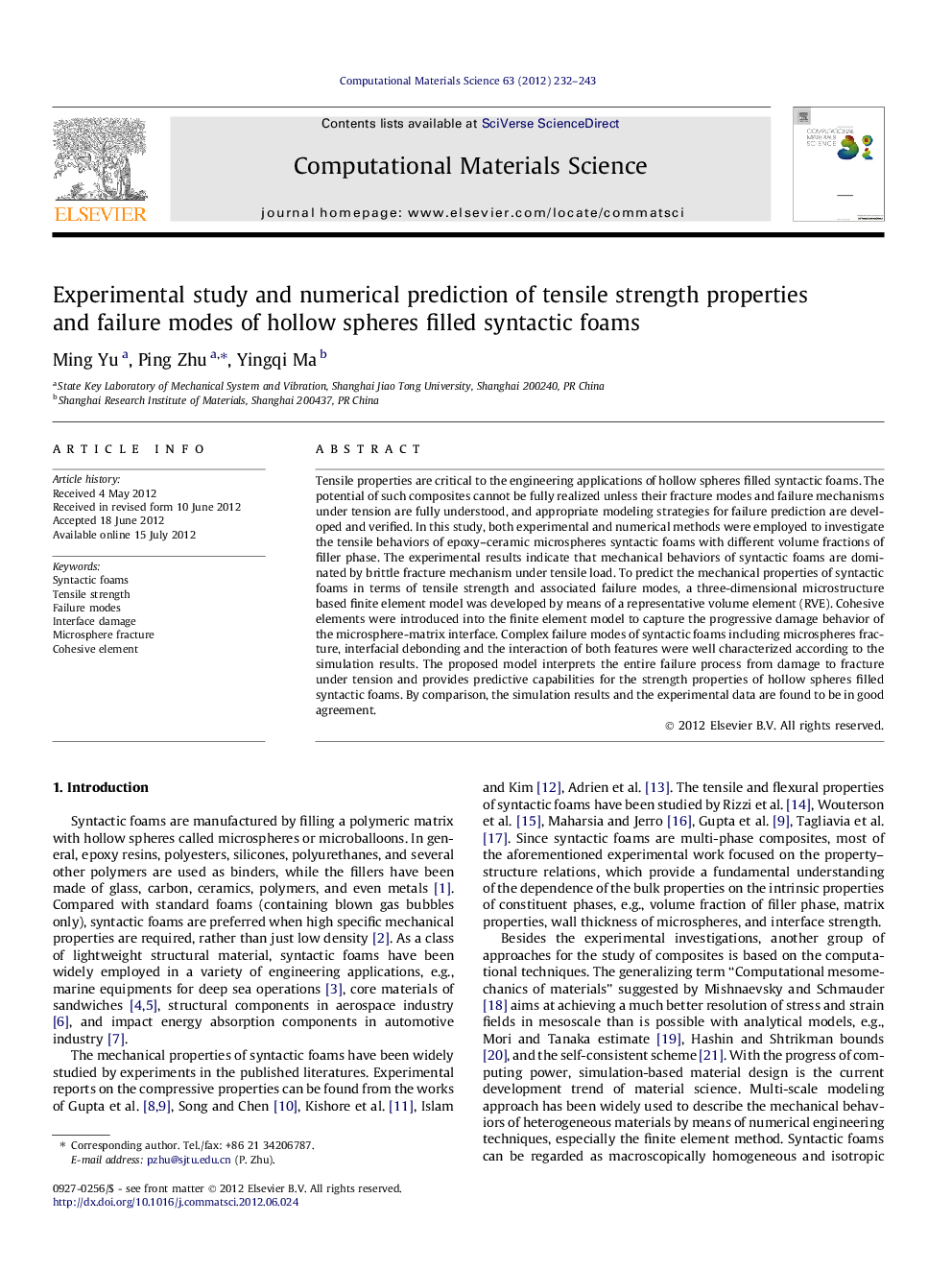| Article ID | Journal | Published Year | Pages | File Type |
|---|---|---|---|---|
| 1561488 | Computational Materials Science | 2012 | 12 Pages |
Tensile properties are critical to the engineering applications of hollow spheres filled syntactic foams. The potential of such composites cannot be fully realized unless their fracture modes and failure mechanisms under tension are fully understood, and appropriate modeling strategies for failure prediction are developed and verified. In this study, both experimental and numerical methods were employed to investigate the tensile behaviors of epoxy–ceramic microspheres syntactic foams with different volume fractions of filler phase. The experimental results indicate that mechanical behaviors of syntactic foams are dominated by brittle fracture mechanism under tensile load. To predict the mechanical properties of syntactic foams in terms of tensile strength and associated failure modes, a three-dimensional microstructure based finite element model was developed by means of a representative volume element (RVE). Cohesive elements were introduced into the finite element model to capture the progressive damage behavior of the microsphere-matrix interface. Complex failure modes of syntactic foams including microspheres fracture, interfacial debonding and the interaction of both features were well characterized according to the simulation results. The proposed model interprets the entire failure process from damage to fracture under tension and provides predictive capabilities for the strength properties of hollow spheres filled syntactic foams. By comparison, the simulation results and the experimental data are found to be in good agreement.
► Influence of filler content on tensile properties was experimentally investigated. ► A 3D RVE generation procedure based on real microstructures was developed. ► The modeling strategy interprets the entire failure process from damage to fracture. ► Mixed failure modes can be well characterized by simulation results. ► Predictions of strength properties are in good agreement with experimental data.
